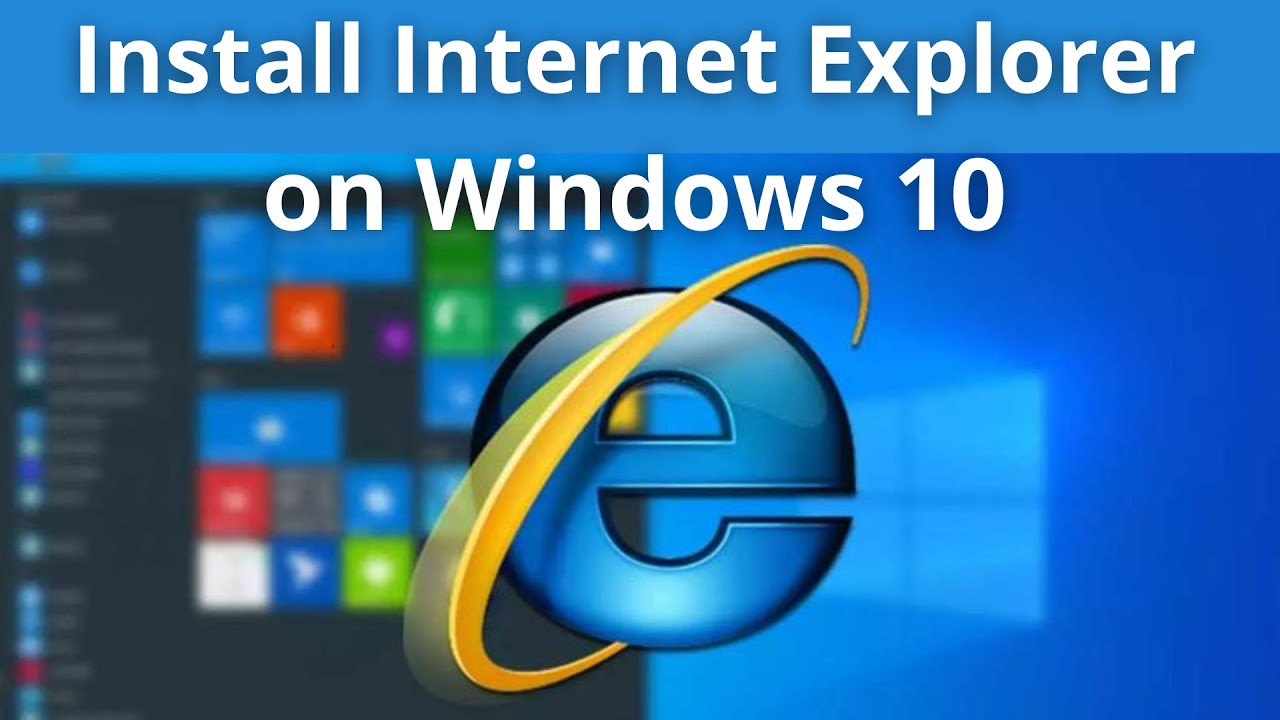Internet Explorer

In the ever-evolving landscape of internet browsers, one name stands out as both a pioneer and a symbol of a bygone era: Internet Explorer. Once the dominant force in web browsing, Internet Explorer has traversed a tumultuous journey from its heyday to its eventual decline, only to witness a surprising resurgence in recent times. This article delves into the fascinating story of Internet Explorer, exploring its origins, rise to prominence, eventual fall, and unexpected revival.
Origins and Rise to Prominence: Internet Explorer was born in the mid-1990s, during the early days of the World Wide Web. Developed by Microsoft as a successor to its earlier browser, Microsoft Internet Explorer (later renamed Internet Explorer), quickly gained traction due to its integration with the Windows operating system. As the default browser bundled with Windows, Internet Explorer enjoyed a significant advantage over its competitors, most notably Netscape Navigator.
During the late 1990s and early 2000s, Internet Explorer became synonymous with web browsing for millions of users worldwide. Its dominance was fueled by a combination of factors, including its seamless integration with Windows, widespread availability, and early support for emerging web technologies. Internet Explorer’s market share soared, reaching levels that seemed insurmountable for its competitors.
The browser’s peak came with the release of Internet Explorer 6 in 2001, which boasted innovative features for its time and solidified Microsoft’s position as the leader in web browsing. However, this dominance would not last forever.
The Decline: Despite its initial success, Internet Explorer began to face increasing competition from rival browsers, most notably Mozilla Firefox and later Google Chrome. These newcomers offered faster performance, better security, and support for modern web standards, which Internet Explorer struggled to match.
One of the biggest setbacks for Internet Explorer came with the release of Internet Explorer 7 in 2006, which failed to address many of the longstanding issues with the browser, including security vulnerabilities and poor standards compliance. As a result, many users began to defect to alternative browsers, leading to a gradual decline in Internet Explorer’s market share.
The situation worsened with subsequent releases, as Internet Explorer fell further behind its competitors in terms of performance and features. The browser’s reputation also suffered due to its association with outdated technology and a lack of innovation.
By the early 2010s, Internet Explorer had become a shadow of its former self, with its market share dwindling as users increasingly migrated to alternatives. Microsoft attempted to reverse this trend with the release of Internet Explorer 9 and later versions, which introduced significant improvements in performance and standards support. However, these efforts were largely unsuccessful in stemming the tide of decline.
Resurgence: Just when it seemed that Internet Explorer was destined to fade into obscurity, a surprising turn of events occurred. In 2015, Microsoft announced the successor to Internet Explorer, named Microsoft Edge, as part of the Windows 10 operating system. Edge was built from the ground up with a focus on speed, security, and compatibility with modern web standards.
As part of its efforts to modernize its browser offerings, Microsoft made the bold decision to retire Internet Explorer in favor of Edge. While Internet Explorer remained available for compatibility purposes, Microsoft actively encouraged users to switch to Edge for a better browsing experience.
Despite this, Internet Explorer continued to linger on, particularly in enterprise environments where legacy web applications relied on its compatibility quirks. However, even in these sectors, the tide was turning, as businesses began to recognize the security risks and performance limitations associated with Internet Explorer.
The final nail in the coffin for Internet Explorer came in 2021, when Microsoft announced that it would end support for the browser in June 2022. This decision marked the end of an era for Internet Explorer, closing the chapter on its storied history as the default browser for millions of users worldwide.
However, just when it seemed that Internet Explorer would fade into oblivion, it found an unlikely savior in the form of nostalgia. In recent years, internet users have developed a renewed interest in retro computing and vintage technology, leading to a resurgence of interest in Internet Explorer.
Nostalgic users have flocked to online communities and forums dedicated to preserving and celebrating the history of Internet Explorer, reminiscing about the days when it was the gateway to the World Wide Web. Some have even gone as far as to create virtual machines running older versions of Windows to experience the classic Internet Explorer browsing experience.
Conclusion:
The story of Internet Explorer is a testament to the rapid pace of innovation in the technology industry and the relentless pursuit of progress. From its humble beginnings as a default browser bundled with Windows to its eventual decline and resurgence, Internet Explorer has witnessed the highs and lows of the web browsing landscape.
While Internet Explorer may no longer be the dominant force it once was, its legacy lives on in the memories of millions of users who fondly remember the days when it ruled the internet. Whether viewed as a relic of the past or a nostalgic reminder of simpler times, Internet Explorer will always hold a special place in the history of the World Wide Web





